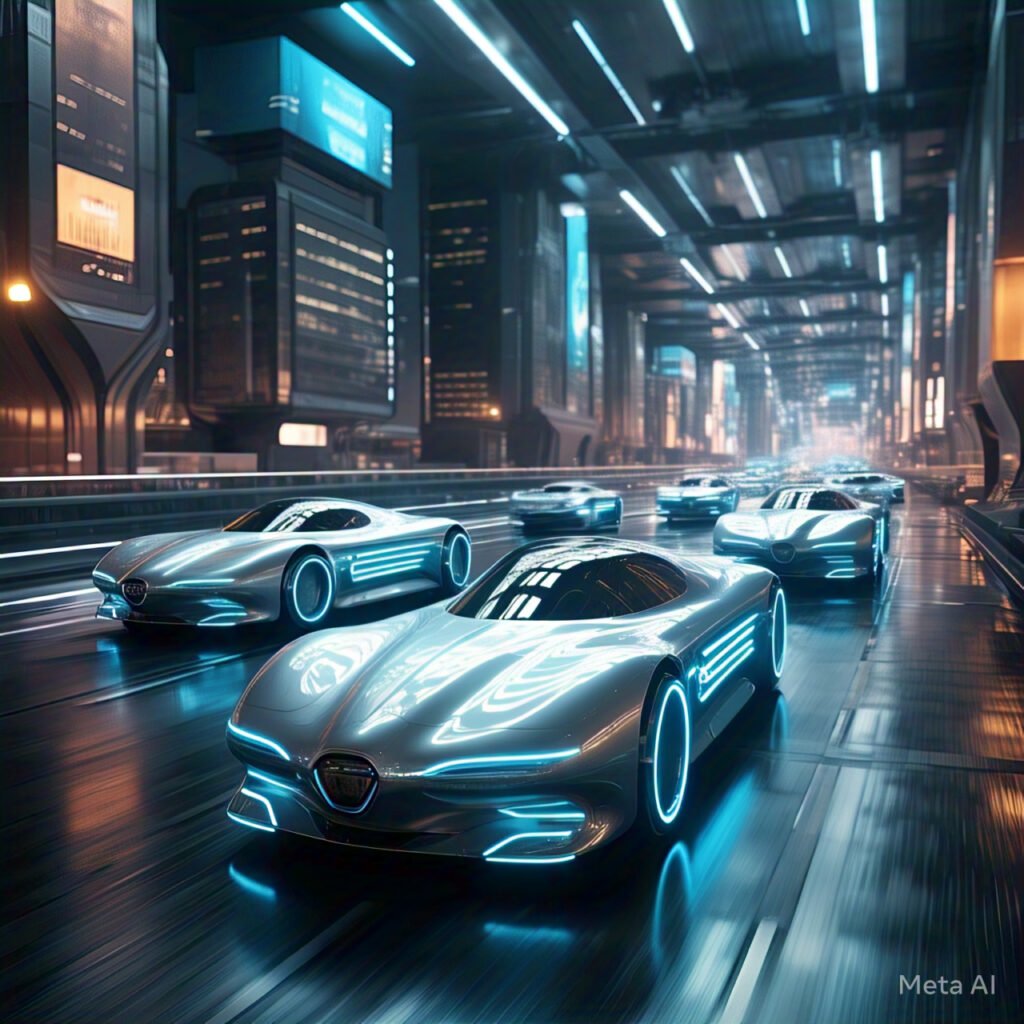- The Automobile Industry’s Future The future of automobiles is poised for transformative changes, driven by advancements in technology, environmental concerns, and evolving consumer demands. Here are the key trends and innovations that are shaping the future of the automotive industry:
1. Electric motor vehicles Growth of Electric Cars: With increasing concerns over environmental sustainability and the push for reduced carbon emissions, electric vehicles (EVs) are expected to become the dominant mode of transportation in the coming decades. Automakers are investing heavily in EV development, and governments are introducing incentives to encourage adoption.
Battery Technology Advancements: One of the main challenges for EVs is battery efficiency. The future will see breakthroughs in battery technology, leading to longer ranges, shorter charging times, and reduced costs. Solid-state batteries, which promise to offer higher energy density and enhanced safety, are an area of significant research.
Charging Infrastructure: As the number of EVs grows, so will the demand for charging infrastructure. The future will likely see a more widespread and fast-charging network, making it easier to charge EVs at home, in public spaces, or along highways.
2.Autonomous(Self Driving)Vehicles
self-Driving Cars: One of the most exciting innovations is the development of fully autonomous vehicles. Companies like Tesla, Waymo, and Apple are working on systems that enable cars to drive themselves using AI, sensors, and advanced machine learning. These vehicles will eliminate the need for human drivers, reducing accidents caused by human error and leading to more efficient traffic management.
Impact on Mobility: Autonomous cars will revolutionize urban transportation. They could lead to ride-sharing becoming the norm, reduce traffic congestion, and even make car ownership less necessary, especially in large cities. This could also open up transportation to people who are unable to drive due to age or disabilities.
Regulation and Safety: As autonomous vehicles become more common, governments will need to create comprehensive regulations and safety standards to ensure their safe integration into society. There will be ethical and legal challenges, especially in the case of accidents or malfunctions.
3. Connectivity and Smart Cars
Vehicle-to-Everything Communication: The future of automobiles will involve cars that are connected to each other and the environment. Vehicle-to-vehicle and vehicle-to-infrastructure communication will allow cars to exchange information with traffic signals, road signs, and even other vehicles, improving safety and efficiency on the roads.
Infotainment and AI Integration: The cars of tomorrow will be increasingly integrated with AI and connected to the internet, offering seamless infotainment systems, smart navigation, and enhanced driver assistance. By learning driver preferences, entertainment choices, and even real-time traffic and route optimization, advanced AI will personalize in-car experiences. Over-the-Air Updates: Future automobiles will receive software updates remotely, much like smartphones do, enhancing vehicle performance and adding new features. Tesla has already begun offering over-the-air software updates, and this trend will continue to evolve, ensuring cars stay up-to-date with the latest technology.
4. Sustainability and Green
 Technologies Hydrogen Fuel Cells:
Technologies Hydrogen Fuel Cells:
While battery-electric vehicles dominate the EV landscape, hydrogen fuel cell vehicles could provide a viable alternative, especially for larger vehicles like trucks. These vehicles use hydrogen to generate electricity, emitting only water vapor as a byproduct.
Sustainability Materials: The automotive industry will prioritize the use of environmentally friendly and sustainable materials in vehicle production. This includes using lightweight composites, plant-based materials, and recycled plastics to lessen the impact that car manufacturing has on the environment. Energy Efficiency: The future will see more fuel-efficient engines and greater emphasis on aerodynamics, lightweight designs, and regenerative braking to improve the energy efficiency of all types of vehicles, reducing their environmental footprint.
5. Advanced Safety Features collision Avoidance and Emergency Braking: Future cars will come equipped with advanced safety systems such as automatic emergency braking (AEB), lane-keeping assist, and adaptive cruise control, all of which will be part of a broader suite of driver assistance technologies.
360-Degree Cameras and Sensors: Advanced sensor systems, including radar, LIDAR, and cameras, will allow cars to have a complete 360-degree view of their surroundings. This will make it possible to detect obstacles and dangers in real time, lowering the likelihood of accidents. Health Monitoring: Some future vehicles may even monitor the health of the driver and passengers, using sensors to track vital signs and detect issues such as fatigue or medical emergencies. In such cases, the car could automatically initiate safety procedures or call for help



